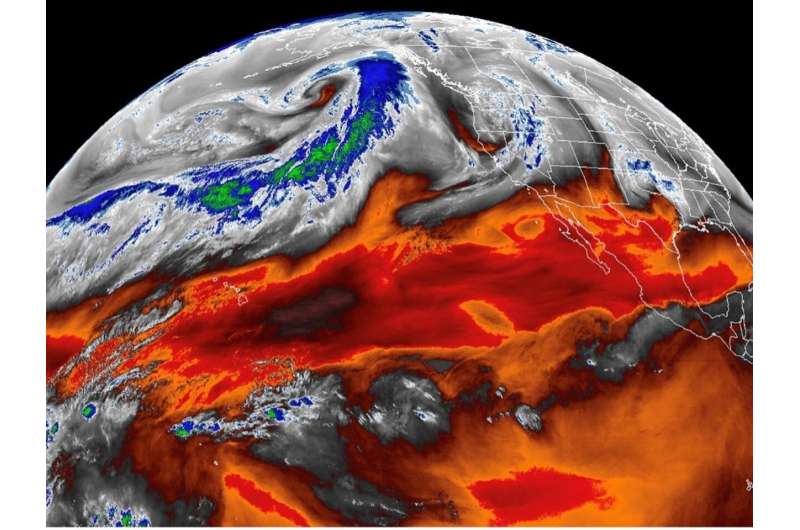
Atmospheric rivers (ARs) are filaments of intense moisture transport in the atmosphere. These weather systems drive a large fraction of the extreme precipitation events over coastal regions. Detecting ARs in satellite observations has long been a challenging task due to the lack of wind information. In a study published in the Journal of Geophysical Research: Atmospheres, scientists derived an approximation of the 3-dimensional (3D) wind field based on the spatial distribution of the satellite-based temperature.
Combining this approximated 3D data with the moisture observed by satellite, scientists created—for the first time—a method to detect ARs via satellite observations. Using this newly developed method, scientists produced the first satellite-based near-global AR dataset.
Scientists have long since detected ARs using data from numerical model simulations. The use of satellite observations would have given them a real-time, global view of ARs solely based on observations, which was more desirable, but such information was out of reach due to the lack of matching wind data.
Now, using a novel method to approximate the 3D wind data via satellites, scientists can automatically detect ARs using satellite observations, and they’ve produced a benchmark AR dataset for nearly the entire globe. Additionally, their evaluation of existing AR data shows that reanalyses overestimate the frequency of precipitation produced in ARs but underestimate its intensity.
In their study, the scientists developed a near-global AR detection algorithm that incorporates 3D wind information from satellite observations, providing a much more accurate picture of impending extreme weather events around the world. The new algorithm combines both the moisture field and wind information, namely two key factors defining AR, from satellites. Scientists used the new detection method to create the first satellite-based near-global AR dataset.
Using this new dataset as a benchmark, scientists are learning the shortfalls of previous AR analyses, such as the width of the ARs, and they said the findings can help improve the representation of ARs and associated precipitation in reanalyses and climate models. As the quality of satellite observations continues to improve, the methodology presented here can be applied to other satellite observations to develop higher resolution or higher frequency AR statistics.
More information:
Weiming Ma et al, Evaluating the Representations of Atmospheric Rivers and Their Associated Precipitation in Reanalyses With Satellite Observations, Journal of Geophysical Research: Atmospheres (2023). DOI: 10.1029/2023JD038937
Provided by
Pacific Northwest National Laboratory
Detecting atmospheric rivers with satellite observations (2024, February 19)
retrieved 20 February 2024
from https://phys.org/news/2024-02-atmospheric-rivers-satellite.html
part may be reproduced without the written permission. The content is provided for information purposes only.